Helmet Mask Item Number: 3321/7 from the MOA: University of British Columbia
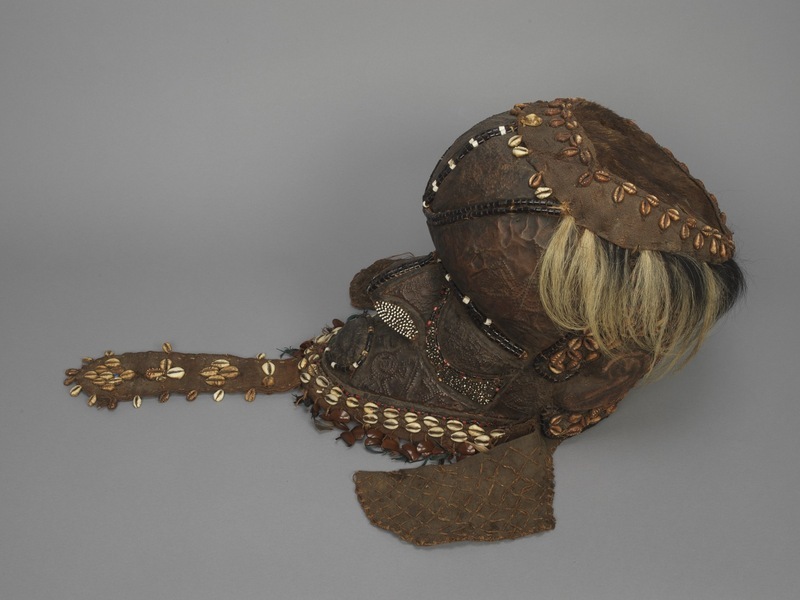
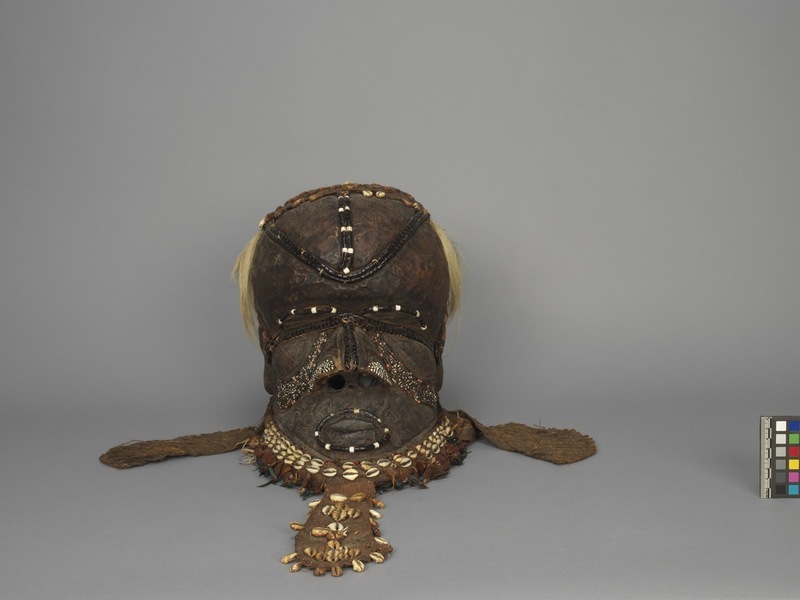
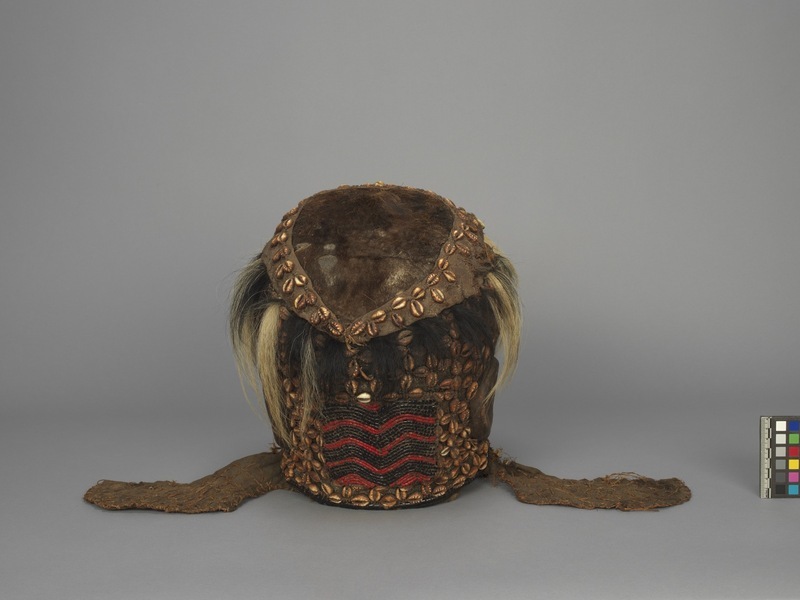
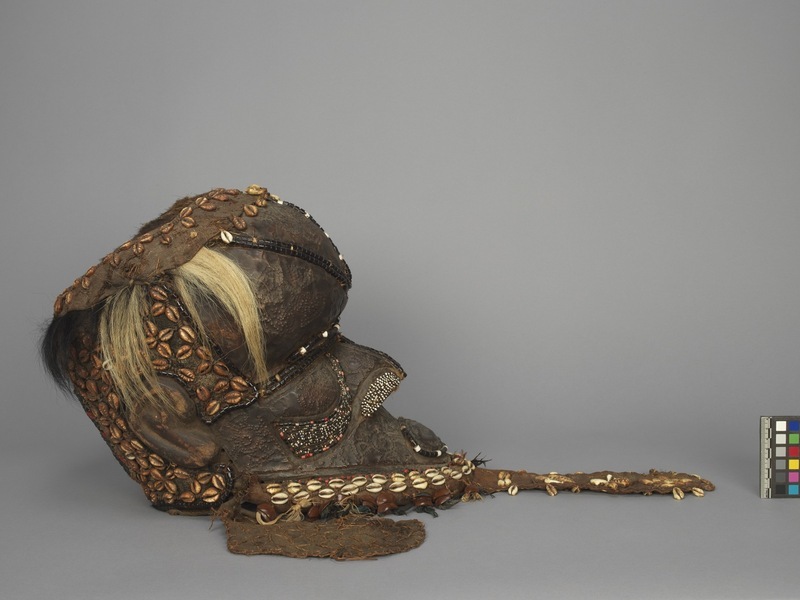
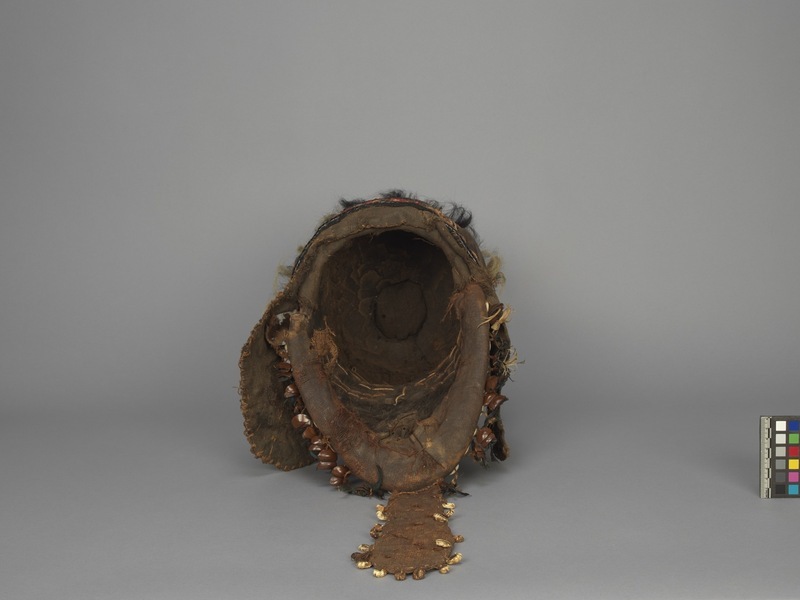
Description
Mask carved from a single piece of wood. Bulging forehead, prominent nose, and sunken cheeks. Cowrie shells and seedpods outline the face, and are arranged in decorative patterns. The face is covered by pounded copper sheeting with repoussé designs. Continuous lines of black beads extend horizontally across the face, around the eyes, down the bridge of the nose, and around the mouth. A large black beaded trident form on the forehead. The cheekbones and nostrils are heavily beaded in small black and white beads. Goat skin, goat hair, and raffia cloth embellish the top of the head. A woven strip hangs from the chin. The base of the mask is outlined by two rows of cowrie shells, with strings of large reddish-brown seedpods and feathers hanging down.
History Of Use
A royal or commoner mask. The mask a king wears is also called mwaash ambooy (or moshambwooy or mukenga); it personifies Woot, the first human and bringer of civilization. These masks are worn through important funerals, being blessed by the king with ritual chants. Later, the king would hand over his mask to dancers to complete the funeral ritual. At other funerals, the mask is framed on a royal mannequin, representing the ruler at death. In addition, the king's mask and two other masks are danced at initiation rituals, in order to tell a story. The other masks are the bwoom (or mbwoom) mask, which personifies the king's younger brother and commoners, and the ngady mwaash (or ngady amwaash, pawn woman of Mwaash), the sister's mask.
Iconographic Meaning
The colours of masks are important in signifying their meaning. Red represents suffering, white means mourning and religious purity, and blue refers to high rank and the contributions of individual leaders.
Item History
- Made in Democratic Republic of the Congo
- Collected in Democratic Republic of the Congo
- Owned by Roxane Connick Carlisle before September 17, 2018
- Received from Roxane Connick Carlisle (Donor) on September 17, 2018
What
- Name
- Helmet Mask
- Identification Number
- 3321/7
- Type of Item
- mask
- Material
- wood, cowrie shell, skin, plant fibre, glass, hair, feather, pod and copper metal
- Overall
- height 32.0 cm, width 26.0 cm, depth 43.0 cm
Who
- Culture
- Kuba
- Previous Owner
- Roxane Connick Carlisle
- Received from
- Roxane Connick Carlisle (Donor)
Where
- Holding Institution
- MOA: University of British Columbia
- Made in
- Democratic Republic of the Congo
- Collected in
- Democratic Republic of the Congo
When
- Ownership Date
- before September 17, 2018
- Acquisition Date
- on September 17, 2018
Other
- Condition
- good
- Accession Number
- 3321/0007